The nuclear baton of the US Navy (part 4)
For its time, the first Soviet anti-ship missile KS-1 had a fairly high performance. With a launch range of about 100 km and a flight speed of 1100 km / h, in the event of a successful hit, it could sink a cruiser with a displacement of 15 tons. In addition, the composition of the mine and torpedo aviation of the USSR Navy had a significant number of jet torpedo bombers Il-000 and Tu-28. In the late 14s - early 50s in the Soviet navy surface ships appeared with guided anti-ship weapons. Starting with the 1958, the Strela (KSShch) PKR P-1 with a launch range of 40 km was equipped with the destroyers of the 56М and 57-bis ave. In 1960, the mass construction of missile boats of 183-P Ave., armed with anti-ship missiles P-15 with a range of 35 km, began. In the middle of the 60, submarines of the 651 Ave. and 675 with the anti-ship missile system P-6, capable of sending the American cruiser from the 270 km distance to the bottom (up to 450 km with external target designation), entered service. The first Soviet anti-ship missile systems had many flaws, but they represented a real threat to the American fleet and were significantly able to compensate for the superiority of the US Navy in large surface ships.
Although the American admirals traditionally relied on the umbrella of deck fighter aircraft based on aircraft carriers, a situation could arise in a combat situation when a detachment of warships or individual combat units had to operate without covering their aircraft. The development of anti-aircraft missiles designed to arm warships in the United States began in the 1944 year, after the Americans faced massive kamikaze attacks. Until the end of hostilities, it was not possible to advance beyond the stage of test launches. In the post-war period, they refused to adopt the KAN-1 and Lark anti-aircraft missiles with the radio command guidance system. In the era of jet aviation anti-aircraft missiles with subsonic flight speed could not be considered an effective means of defense.
In 1945, the naval command initiated a Bumblebee program (English Bumblebee), which included the development of a long-range anti-aircraft missile with a ramjet engine. However, the creation of a guidance system for a long-range missile proved to be a very difficult task, moreover, great difficulties arose in ensuring reliable operation of the ramjet engine when performing abrupt maneuvers. As a result, in parallel with the development of long-range missiles, it was decided to create a relatively compact solid-fuel missiles using the existing developments.
In 1949, the specialists of the aircraft construction company Convair began to design the ship's short-range air defense system RIM-2 Terrier. The first launches of missiles were carried out in the 1951 year, but due to the need for improvements in the guidance system, the first US naval anti-aircraft missile system was adopted only in the 1956 year.
Test launch of the RIM-2 Terrier from the battleship USS Mississippi (AG-128), 1954 year
The launch of the Terrier anti-aircraft missiles was carried out from the Mk.4 launcher, with an automated loading system and a cellar on an 144 rocket. The reload speed of the launcher was approximately 15 seconds per two missiles. Another 15 seconds was required to manually bring in the position stored in the folded form stabilizers Zour. This made it possible to launch an average of 4 rockets per minute with two salvos of two rockets. Subsequently launchers Mk.4. replaced with more comfortable Mk.10 PUs with a cellar on 40, 60 or 80 missiles.
The first modification of the SAM-N-7 BW-0 anti-aircraft missile (RIM-2A), despite the official decision to adopt, was essentially a prototype and never deployed on warships. The improved model went to the series - SAM-N-7 BW-1 (RIM-2B), which was notable for its simplified design. However, the sailors, having tested these weapons, categorically demanded its refinement. The first types of missiles were capable of striking only subsonic aerial targets, which was unacceptable in the middle of the 50-s. After creating an "intermediate" SAM-N-7 BT-3 (RIM-2C) model with a flight speed of 900 m / s and a maximum launch range of 28 km, the SAM-N-1957 BT-model went into a larger series in the second half of 7. 3A (RIM-2D) with a launch range of 4,5-36 km. Reach in height was 24 000 m. The cost of the RIM-2D rocket in 1957 was $ 60 000.
SAM-N-7 BT-3AN anti-aircraft missile (RIM-2DN) was equipped with a W45 nuclear warhead. Deliveries of such missiles have been going on since 1962. The W45 nuclear warhead at the start of the 60s was the most compact in the United States. Specialists from the Lawrence Livermore National Laboratory (California) succeeded in creating a “special” combat unit suitable for long-term operation: 68 kg, 292 mm diameter and 686 mm long. Different modifications of W45 had power: 0,5, 1, 5, 8, 10 and 15 CT. In the anti-aircraft missile system “Terrier”, warheads with 1 kT energy release were used, which allowed them to destroy air targets with a miss to 800 m. Anti-aircraft missiles with a nuclear warhead were intended to repel a massive raid by Soviet bombers and salvo attacks against anti-ship cruise missiles.
The rockets of the “Terrier” air defense missile system of early and late modifications were very different from each other. Two-stage solid propellant missiles of the RIM-2A / D models were aimed at the target in the beam of the AN / SPG-55 radar. This method of targeting is also known as the "saddled beam." This made it possible to create fairly simple control equipment, but as the missile moved away from the radar, the pointing accuracy dropped sharply. To maintain the same probability of damage at a distance of more than 30 km, starting with a modification of RIM-2E, semi-active radar seeker began to be used. In addition to increasing the accuracy of firing at long distances, it was possible to reduce the minimum height of air targets to 300 m, on the first models of Terrier missiles it was 1,5 km.
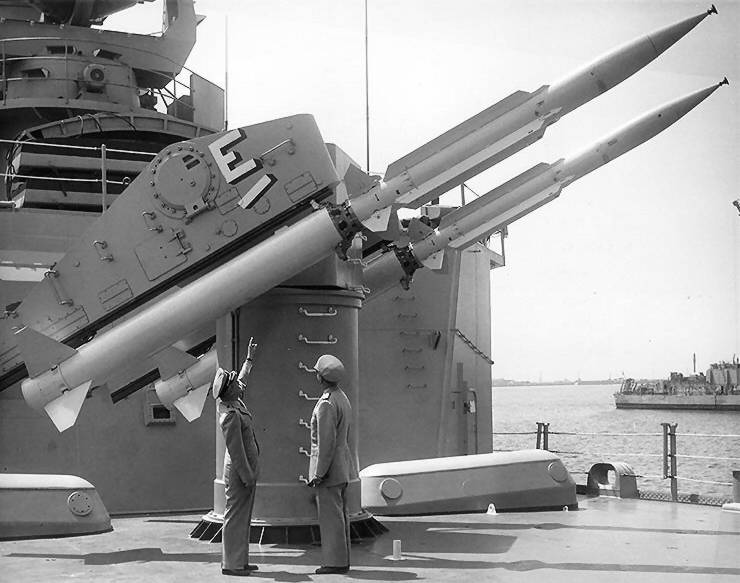
The RIM-2E missile had a length of 8,1 m, a mass of 1800 kg and a diameter of 340 mm. In the middle of 60-x due to a radical improvement in the formulation of solid fuel was created Zur RIM-2F, with a launch range for high-altitude targets 72 km. Optionally, there was the possibility of firing nuclear warheads at large marine or radio-contrast coastal targets.
The Terrier anti-aircraft missile system in the 50-60-e was installed both on new-built ships and on modernized cruisers and aircraft carriers. They were equipped with: three aircraft carriers of the Kitty-Hawk type, two heavy cruisers of the Boston type, three light cruisers of the Providence type, nine Belknap missile cruisers, nine Lehi-type missile cruisers, Trakstan nuclear cruisers, Long Beach and Bainbridge, as well as ten Farragut destroyers.
RIM-2F anti-aircraft missiles were used in a combat situation in Southeast Asia in the 1972 year. 19 On April, the Belkap-type Sterret missile cruiser (DLG-31), which fired on the Vietnamese coast and its escort, were attacked by two North-Vietnamese MiG-17F fighters. One of the MiGs attacking the escort destroyer was captured by cruiser radars and hit by an anti-aircraft missile. Later in the day, the Terrier was attacked by an unidentified aerial target, allegedly identified as Termit.
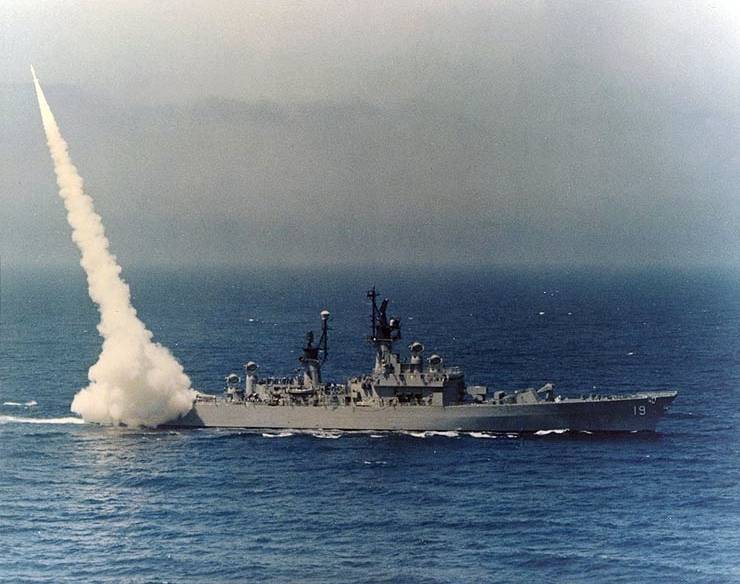
In total, more than 8000 anti-aircraft missiles of the RIM-2А / В / С / D / Е modifications were assembled at the enterprises of the companies “Convair” and “General Dynamics”. The complex was in service with the US Navy before the 1989 year, after which it was replaced by RIM-67 Standard.
Almost simultaneously with the first launches of the RIM-2 Terrier anti-aircraft missiles, tests of the RIM-8 Talos anti-aircraft missile system began. This long-range air defense missile system was also developed as part of the Bumblebee program, but due to its greater technical complexity, it was adopted later in the 1959 year. The guidance system of the anti-aircraft missile RIM-8A was in many respects similar to the RIM-2. At the initial and middle stages of the trajectory, the rocket flew in the radar beam, and at the final stage it switched to homing with a signal reflected from the target. Semi-active radar homing provided high accuracy, in some cases it was possible to destroy the subsonic high-altitude target during training control tests by direct hit.
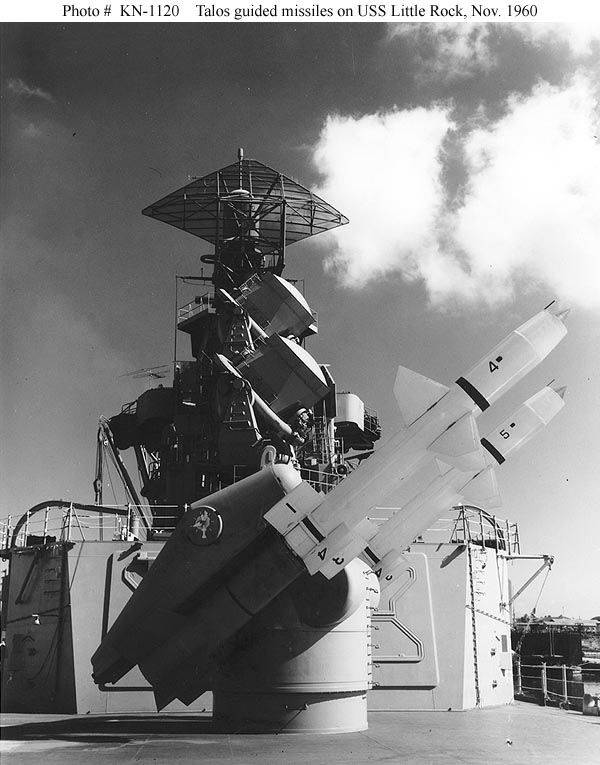
Launcher Mk.7 with anti-aircraft missiles RIM-8A on the background of the AN / SPW-2 and AN / SPG-49 radar antennas of the USS Little Rock missile cruiser (CG-4)
The calculations made by the specialists of the Applied Physics Laboratory at Johns Hopkins University showed that to achieve a launch range of more than 100 km while maintaining acceptable weight and size characteristics, it is optimal to use a propulsion engine with a liquid fuel. This made it possible to get rid of the need for storage on board the oxidant rocket, since atmospheric oxygen was used during the combustion of liquid fuel in the ramjet. To accelerate the rocket to the speed at which the ramjet began to work stably, a solid fuel accelerator was used. A multi-mode cruise engine powered by kerosene was fed into the combustion chamber using a turbo pump driven by an incoming air flow. The main elements of the rocket and the main engine were developed and produced by Bendix Corporation. In the Soviet Union, the 3М8 rocket with a similar layout was used as part of the Krug medium-range anti-aircraft missile system. In the UK, a rocket of a similar pattern was used as part of the shipboard Sea Dart.
The first modification of the RIM-8A SAMs weighed 3180 kg, had a length of 9,8 m and a diameter of 71 cm. Thus, the mass and dimensions of the anti-aircraft missile were comparable with fighters of the Second World War. Soon after adopting an anti-aircraft missile with a warhead with a mass of 136 kg, it was tested and put into service with the RIM-8B anti-aircraft missile system with the W30 nuclear warhead. The nuclear warhead, weighing 180 kg, had a power of about 5 CT. The missile with YABCh was intended for shooting at a group air target at high or medium altitudes. When the warhead detonated, it provided effective damage by the neutron and thermal radiation of the aircraft within 1000 — 1800 radius. The shock wave was of less importance, since detonation was usually carried out at a high altitude, where the atmosphere was very rarefied. The maximum launch range of the RIM-8A / V was 92 km, the height of the lesion was 3-24 km. In total, the fleet was delivered 280 anti-aircraft missiles in a nuclear version. Observers who were present at the RIM-8 SAM missile noted that they formed a very small smoke plume compared to Terrier missiles.
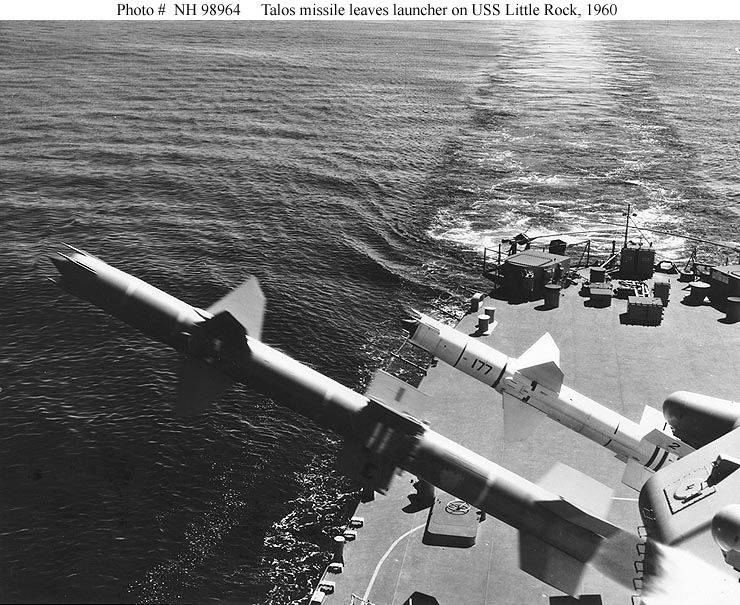
In the process of upgrading anti-aircraft missiles, it was possible to structurally unify the missiles with conventional and nuclear warheads, which in turn reduced the cost of the non-nuclear missile version from $ 280 000 to $ 240 000 as of 1964 a year. On the rocket of the “atomic” modification RIM-8D, they abandoned the semi-active radar homing head, since a significant damage zone in a nuclear explosion compensated for the pointing error. Due to the improved guidance system and the use of more energy-intensive liquid fuel, the launch range of the latest serial modifications of the RIM-8G and RIM-8J was increased to 240 km, and the maximum airspeed was 2,6M.
Due to the large mass, size and high cost, the shipborne air defense systems RIM-8 Talos did not receive such a distribution as the RIM-2 Terrier. In the underdeck store of the Mk.7 launcher, which weighed along with the missile delivery system around 200, there were no more than 16 missiles ready for use. On the Albany-type cruisers converted from the Baltimor-type heavy cruisers and the Long Beach atomic cruisers, twin Mk.12 launchers with the 104 general rocket ammunition were used. The standard displacement of the refurbished USS Albany (CG-10) was 13 700 t, and the atomic Long Beach (CLGN-160) was 15 500 t. In addition, the combined guidance system Zur required the use of two bulky radar AN / SPW-2 and AN / SPG-49. In addition to the three Albany cruisers and one Long Beach, Talos missile systems received three Galveston-class cruisers with a standard displacement of 15 200 tons.
But, despite the fact that this ZRK was installed on few cruisers, the heavy Talos anti-aircraft missiles of the family had a chance to fight more than a less dimensional Terrier. According to US data, between May 1968 and May 1972 of the Talos missile system, launched from the Long Beach, Oklahoma City and Chicago cruisers, four Vietnamese MiGs were shot down at 80-150 km. In addition, it is alleged that the RIM-8H Talos –ARM missiles, converted from anti-aircraft to anti-radar, managed to hit several radars located on the coast of the DRV.
However, military successes did not help the anti-aircraft missile system, which in the 70-s looked frankly archaic. The RIM-8 Talos SAM missile launchers were removed from the decks of American cruisers in the 1980 year. But story The Talos did not end there, the remaining late-modification anti-aircraft missiles were converted into radio-controlled targets MQM-8G Vandal, which imitated Soviet and Russian supersonic anti-ship missiles before 2005.
The RIM-67 and RIM-156 Standard anti-aircraft missile systems, replacing the ship's RIM-2 Terrier and RIM-8 Talos airborne missiles, thanks to the use of solid-state high-speed electronics and new layout solutions, while maintaining an acceptable launch range, had better operational reliability and increased noise immunity. More compact and easy-to-use naval long-range air defense systems to the top of the 90-x completely crowded out the bulky and energy-intensive anti-aircraft complexes of the first generation. In addition to the fight against air targets, the rocket of the “Standard” family could be used on surface ships of the enemy and hit working coastal and shipborne radars.
At the beginning of the 80-x, in connection with the upcoming decommissioning of the Terrier and Talos nuclear missile systems with nuclear warheads, the command of the US Navy planned to adopt the long-range RIM-156A nuclear warhead W81, which kept its lineage from the B61 and the nuclear bomb, structurally had a lot in common with the W80 warhead mounted on BGM-109A Tomahawk cruise missiles.
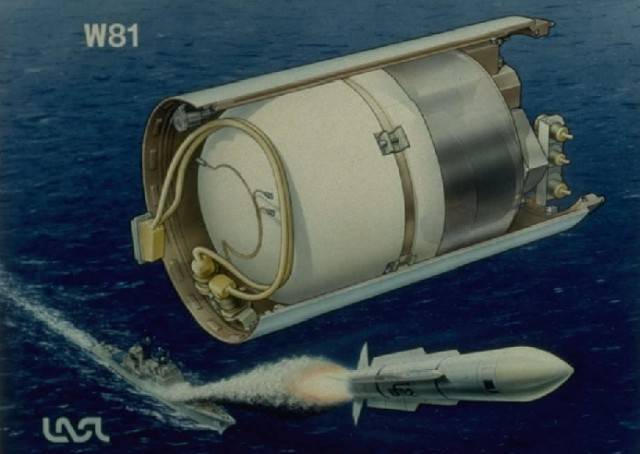
The W81 warhead with a length of about 400 mm and a diameter of approximately 250 mm weighed no more than 60 kg. Its power is not known, but most experts are inclined to believe that it was no more than 2 CT.
In 1986, after the start of mass construction of warships equipped with the Aegis power supply system, it was decided to abandon the plans to create a new nuclear missile defense system. Repeatedly increased accuracy of targeting anti-aircraft missiles and fire performance made it possible to solve almost all combat missions. An important factor contributing to the abandonment of nuclear warheads on anti-aircraft missiles was the complexity and cost of security measures and the high probability of unwanted incidents. Moreover, already in the 60s of the last century, when it became possible to equip numerous American cruisers with 155-203-mm nuclear missiles, this did not happen. However, 203-mm W33 nuclear shells with a capacity from 1 to 40 kt and 155-mm W48 with a capacity of about 0,1 kt to 1992, were in service with the Marine Corps.
Initially, the purpose of developing atomic artillery shells was the desire to deliver accurate atomic strikes on the front edge of the enemy in close proximity to their forces. But if desired, “special” shells could be used in a naval battle, destroy objects and concentrations of enemy troops on the coast, and even repel enemy air raids. As a result, at least one type of atomic projectile was created by order of the fleet. They became the Nuclear Mark 23 Kätie (W23), designed for 406-mm artillery guns Mark 7 of Iowa type battleships. On the battleships there were nine 406-mm guns in the three towers.
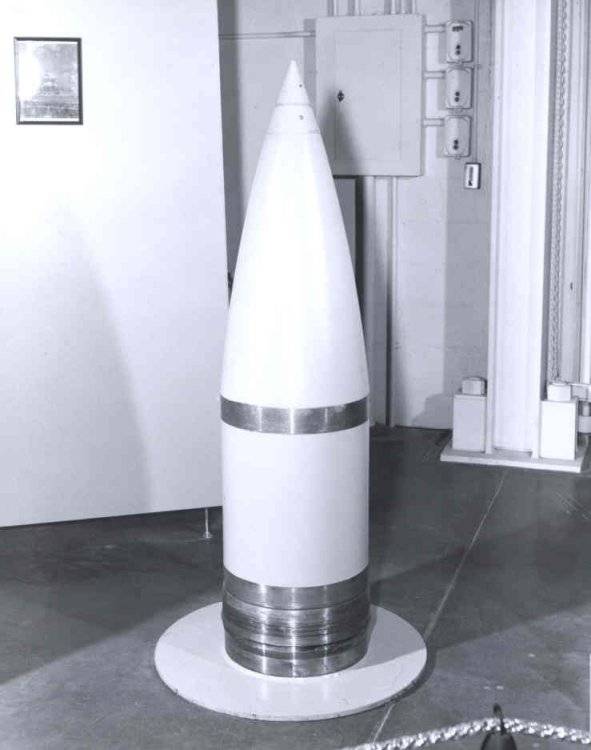
Layout of the 406-mm atomic artillery shell at the National Museum of Atomic Energy History in Albuquerque, New Mexico
According to the official version, the 406-mm Mk.23 was developed in the second half of the 50-x, based on the 280-mm atomic projectile W19 with the TNT equivalent of TNN-15 CT, designed for the first American atomic gun, the M20. The mass of the 65-mm projectile Mk.406 was 23 kg, length - 778 mm. The firing range is approximately 1610 km.
Although 406-mm projectiles could not hit targets at a range accessible to deck bombers and missiles, their use only required to load and direct the gun, which took much less time than hanging the bomb on a plane or putting a flight task into the rocket. In addition, an artillery shell could hit point targets, did not depend on weather conditions and time of day, and was practically invulnerable to air defense weapons.
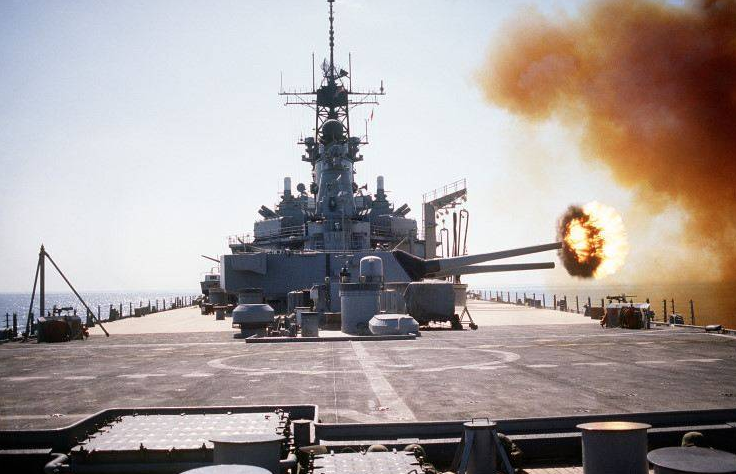
The serial assembly of the Mk.23 projectiles began in 1956. Total 50 was transferred to the fleet of such ammunition. According to data released by Global Security, USS Iowa (BB-61), USS New Jersey (BB-62) and USS Wisconsin (BB-64) were equipped with nuclear cellars. Each storage facility could have ten nuclear and the same number of practical Mk.24 projectiles used during practice firing.
Representatives of the US Navy refrained from commenting on the presence of nuclear artillery shells on board battleships. But according to the US Department of Energy, the Mk.23 nuclear shells were decommissioned in October 1962, which was associated with the preservation of battleships. At the end of 60, all 406-mm shells with a nuclear warhead were disposed of, but one was used during a test explosion carried out as part of Operation Plowshare (in Soviet sources, “Operation Lemech”). The purpose of the “Ploucher” program was to conduct a series of nuclear explosions in the United States to solve industrial and other non-military tasks: explosive drilling of rocky soils, creating construction pits, dams, harbors and underground cavities for storing oil and gas using decommissioned nuclear warheads , the life of which has come to an end. In total, within the framework of this program, 27 ground and ground explosions with a capacity of 0,37-105 CT were produced. In 1973, the project “Plushcher” was recognized as unpromising and turned off. The main reason for this decision was significant emissions of radiation and protests from the public.
To be continued ...
Based on:
https://feldgrau.info/waffen/13938-atomnaya-glubinnaya-bomba
http://www.dogswar.ru/boepripasy/snariady-rakety/6972-atomnaia-glybinnaia-.html
https://www.revolvy.com/page/B57-nuclear-bomb
http://www.airwar.ru/enc/sea/s3.html
http://pentagonus.ru/publ/protivolodochnye_raketnye_kompleksy/31-1-0-1394
https://www.businessinsider.com/the-6-best-anti-submarine-weapons-2015-10
http://www.seaforces.org/wpnsys/SURFACE/RUR-5-ASROC.htm
https://www.globalsecurity.org/military/systems/munitions/rim-8.htm
http://rbase.new-factoria.ru/missile/wobb/talos/talos.shtml
http://www.skytamer.com/Bendix_MQM-8G.html
http://elib.biblioatom.ru/text/yadernoe-oruzhie-ssha_2011/go,2/
https://www.globalsecurity.org/wmd/systems/w23.htm
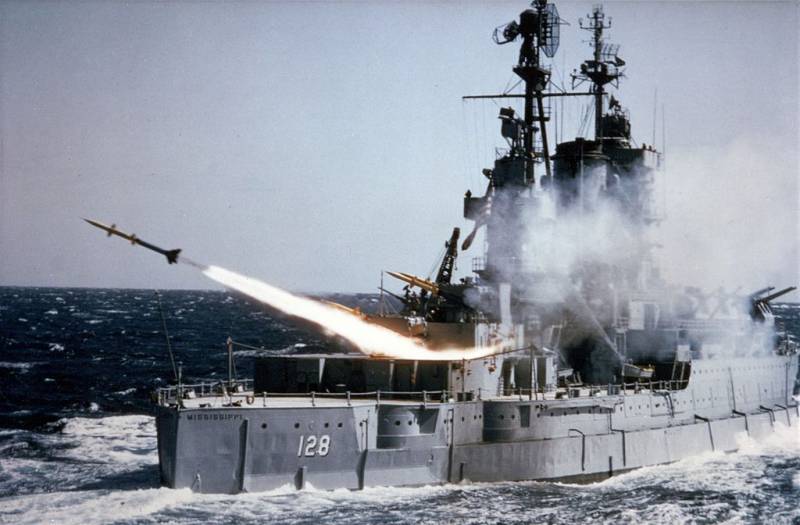
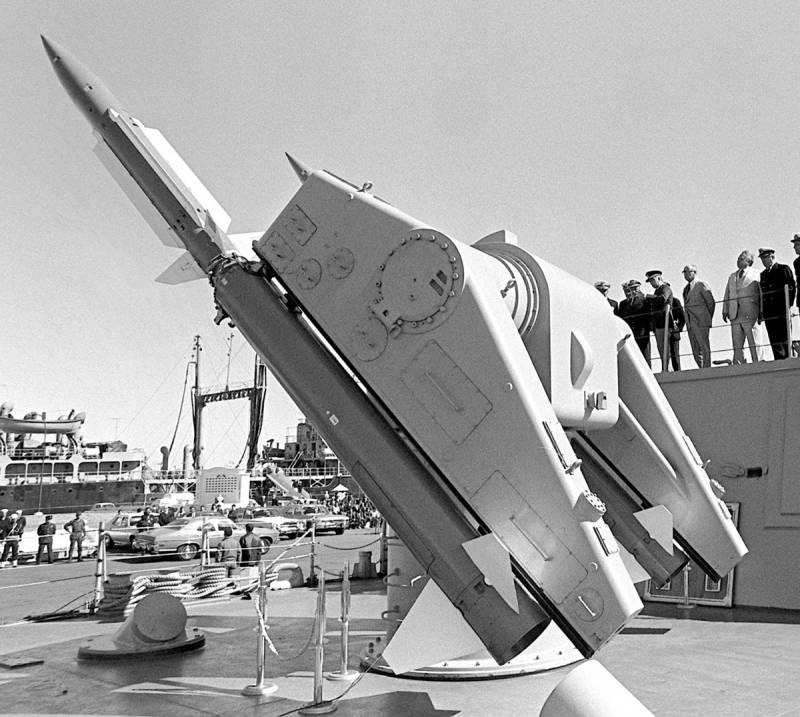
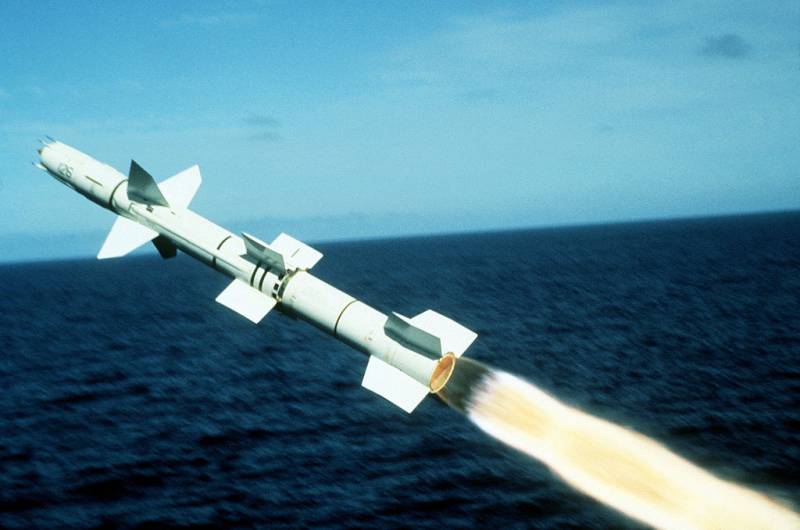
Information